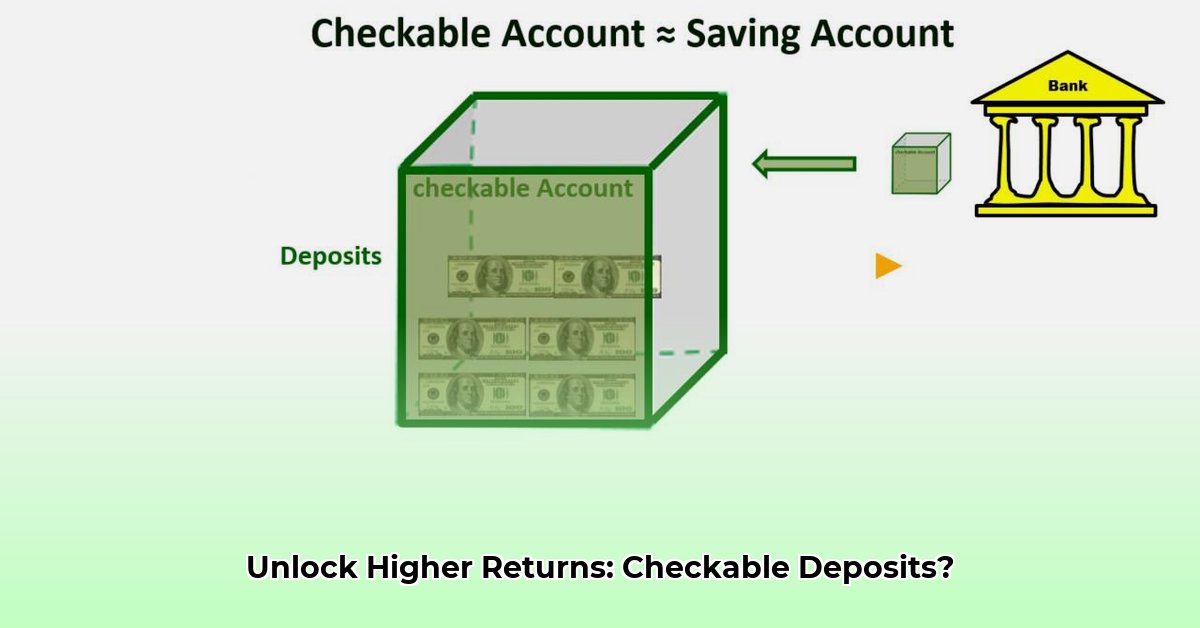
Want to make your money work harder? Understanding checkable deposits—the accounts you use for everyday banking—is key to smarter financial management. This guide will help you navigate the different account types, fees, and strategies to maximize your returns and minimize costs. For the latest CD rates, check out ConnectOne Bank's CD rates.
Types of Checkable Deposit Accounts
Several account types fall under the "checkable deposit" umbrella, each with distinct features:
Standard Checking Accounts: These are basic accounts for everyday transactions like paying bills and making purchases. Interest is typically low or non-existent. They prioritize ease of access and convenience.
Negotiable Order of Withdrawal (NOW) Accounts: Similar to standard checking, but typically offer a small amount of interest. Minimum balance requirements might apply.
Money Market Accounts (MMAs): Designed for higher interest rates, MMAs often require higher minimum balances and limit the number of transactions per month (more on this later!). They are ideal for those who keep larger balances and make fewer transactions.
Here's a comparison:
| Account Type | Interest Rate | Transaction Limits | Minimum Balance | Ideal For |
|---|---|---|---|---|
| Standard Checking | Very Low or None | Typically None | Often None | Frequent transactions, daily use |
| NOW Account | Low to Moderate | Usually None | Possibly required | Moderate transactions, some interest |
| Money Market Account | Moderate to High | Often Restricted | Typically Required | Higher balances, less frequent access |
Choosing the Right Checkable Deposit Account
Selecting the right account depends on your financial profile. Consider these factors:
Interest Rates: While attractive, higher interest rates might not offset higher fees or minimum balance requirements. Don't solely focus on the rate.
Minimum Balance Requirements: Many accounts require a minimum balance to avoid monthly maintenance fees. Failing to meet this can significantly impact your earnings.
Fees: Beware of overdraft fees (charged when you spend more than you have), monthly maintenance fees, and other charges. Carefully review each bank's fee schedule.
FDIC Insurance: In the U.S., the Federal Deposit Insurance Corporation (FDIC) insures deposits up to $250,000 per depositor, per insured bank, providing a crucial safety net. Did you know that this protection is a major benefit for consumers?
Regulation D and Transaction Limits
Regulation D governs the number of transactions allowed from MMAs each month. Exceeding the limit might incur fees. These limits and associated fees vary by bank, so always check your institution's policies. This is a crucial aspect of MMA management.
Overdraft Protection and Fees
Overdraft protection covers transactions exceeding your balance, preventing bounced checks. However, it comes with significant fees. Weigh the convenience against the cost. Are the potential fees worth the peace of mind?
Maximizing Returns and Minimizing Fees: Actionable Strategies
Here's how to optimize your checkable deposit accounts:
Shop Around: Compare rates and fees from different banks and credit unions. This simple step can save you considerable money over time.
Meet Minimum Balance Requirements: This avoids monthly maintenance fees and allows you to earn the maximum interest rate.
Track Transactions: Stay within your MMA's transaction limits to avoid penalties.
Consider Alternatives: If you don't need check-writing capabilities, a high-yield savings account might be a better option.
Maintain Account Activity: Keeping your account active can sometimes help avoid fees.
Conclusion
Understanding checkable deposits is crucial for effective personal finance. By carefully considering account types, fees, and transaction limits, you can choose the account that best suits your needs and maximize your returns while minimizing expenses. Remember to shop around and compare options to find the best fit for your financial goals.